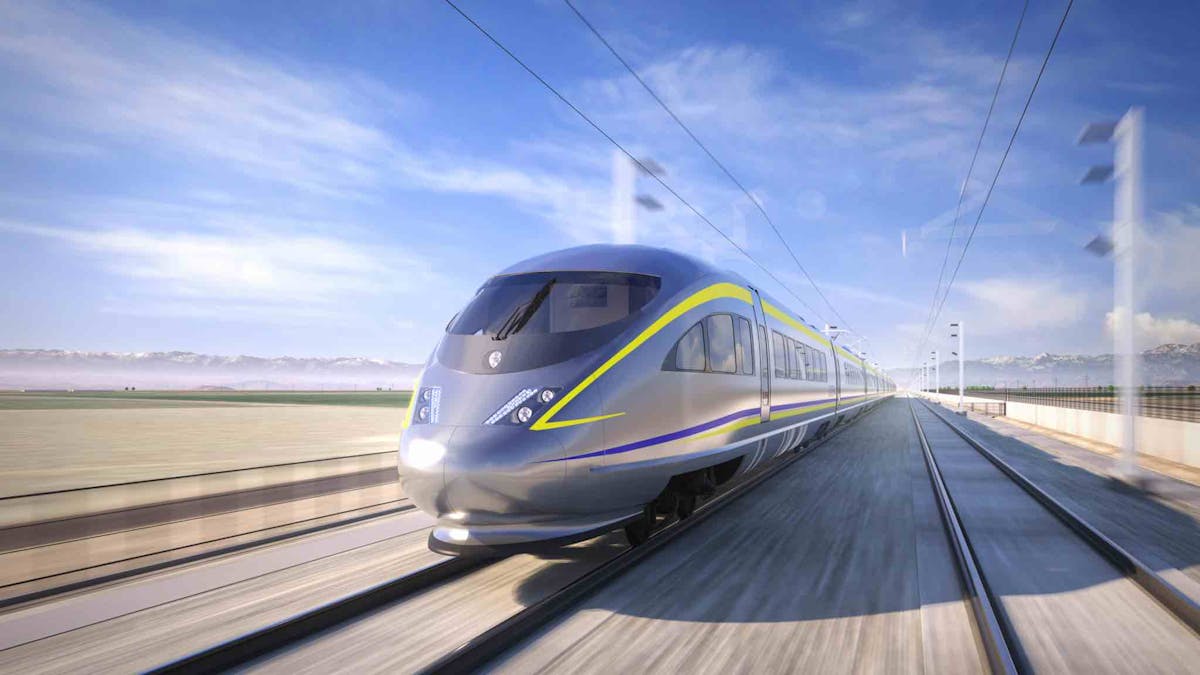Billions Over Budget and Years Behind Schedule, California’s ‘Train To Nowhere’ Asks State for Another $7 Billion
A Democratic member of the assembly, Steven Bennett, says there is ‘no plan’ for the much-maligned project and a ‘good likelihood it’s going to get worse.’

Already staring down billions of dollars in cost overruns and years of delays, the managers of California’s beleaguered high-speed rail project are now warning state legislators that the project may grind to a halt entirely unless they pony up billions more in taxpayers’ money.
A representative from the California Legislative Analyst Office, Helen Kerstein, told lawmakers this week that the controversial high-speed rail project needs another $7 billion by June 2026, or the project could come to a halt.
She also said there is “no specific plan to meet that roughly $7 billion gap” and that there is “some risk that that gap could grow.”
“This isn’t a way out in the future funding gap. This is a pretty immediate funding gap,” she said.
The $7 billion figure is just for one segment of the high-speed rail project, which was initially supposed to stretch from San Francisco to Los Angeles and hit speeds of more than 200 miles per hour. At the moment, 119 miles of the 500-mile first phase of the project are under active construction.
When voters first approved the plan for the rail project in 2008, it was supposed to come with a price tag of $32 billion and be completed by 2029.
However, in 2019, after years of delays and ballooning costs attributed to lawsuits, environmental impact studies, and the lengthy process of acquiring the land to build the line on, Governor Newsom said the state would proceed with a stretch from Merced to Bakersfield to “just get something done.” He suggested that the rest of the project could be completed later.
A February report from California’s inspector general estimated that the total cost of the project will exceed $100 billion. The state has spent roughly $14 billion on the segment from Merced to Bakersfield, and officials hope that it will be completed sometime between 2030 and 2033.
Besides the bleak news of the funding gap, KCRA reported that the High Speed Rail Authority further frustrated lawmakers when it only submitted an “incomplete project update” in time for the budget hearing and said it would submit a more complete update on the plan for the project sometime in the summer.
A Democratic Assemblyman, Steven Bennett, told KCRA, “We have no plan, we have a good likelihood it’s going to get worse, and we have a short time to solve the problem.”
The hearing came shortly after Mr. Newsom released an episode of his new podcast during which he touted work on the 171-mile Merced-Bakersfield segment. “We did the rail head. We’re starting to lay track. This thing is starting to get very, very real,” he said. “Now the hard work is behind us.”
Mr. Newsom’s guest, columnist Ezra Klein, noted that Democrat-run states and cities have struggled to complete major public works projects in recent years. However, the governor defended the slow pace of progress for the high-speed rail project, saying, “At the end of the day, we’ve got these constraints that are well established and existing constraints.”
President Trump’s transportation secretary, Sean Duffy, ridiculed the project after the latest budget shortfalls were announced. “Now California says they need an additional $7B to fall out of the sky just for a 171-mile train from Merced to Bakersfield,” Mr. Duffy wrote on X. “What a joke! The state’s train to nowhere was supposed to cost around $33 billion.”
He noted that $2.5 billion of the money spent so far on the project has come from taxpayers across the country, and that another $4 billion is “under review.”
“[The Transportation Department] will continue to investigate this project to determine how exactly federal dollars have been used and whether federal support should continue,” Mr. Duffy wrote.
While California’s high-speed rail project has struggled, other states have seen similar undertakings completed in far less time. Florida’s Brightline, a privately owned passenger train that reaches speeds of up to 125 mph, was first proposed in 2012. By 2018, Brightline was operating between Miami and West Palm Beach. In 2023, it began running trains from Miami to Orlando, a distance of 235 miles, in 3.5 hours.
The company is also in the process of constructing a 218-mile system from Southern California to Las Vegas that will feature electric trains that can reach speeds of up to 200 miles per hour. It expects that line will be open in December 2028, missing its original goal of being functional in time for the 2028 Summer Olympics.

